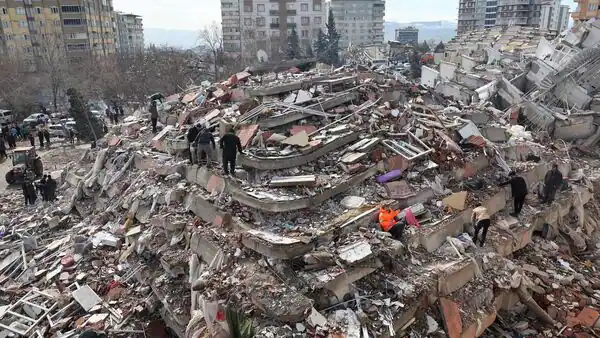Heat pollution and Earthquakes – Why the world needs to have broader conversations about climate change
April 21, 2023 Leave a comment
According to NASA website, “Global warming is the long-term heating of Earth’s surface observed since the pre-industrial period (between 1850 and 1900) due to human activities, primarily fossil fuel burning, which increases heat-trapping greenhouse gas levels in Earth’s atmosphere.”
NASA’s definition of global warming is misleading for a very specific reason. It is placing the primary responsibility of global warming on fossil fuel burning. While it is true that releasing trapped carbon in fossils back into the atmosphere has led to the greenhouse effect and increase in Earth’s surface temperature, global warming has to be understood from a much larger perspective.
From the smallest microorganisms to the blue whales, every living being generates and emits heat from its body. We consume food, break it down for providing us energy and release that energy as heat into our surroundings when we do our activities. In order to understand Earth’s surface temperature, we have to first select areas in all geographic locations, measure heat generated by every organism except humans in those areas and extrapolate the results to find out the total heat generated by all animals except humans over a specific period of time. There is a good reason to exclude humans from this exercise.
Except the animals that live in packs, all other animals try to keep distance from their own kind and from other animals except during breeding time. Being territorial about food is one reason and the other reason is, as population density increases, heat released from their bodies become amplified. Understanding body heat is easy. In a room cooled by A/c, the room will be moderately cold when there are more number of people and as more people leave the room the remaining people will start feeling colder. Also, greater population density results in faster spreading of diseases. Predator-prey relationships and diseases are two major ways how nature enforces population control on animals. So measuring the population of each animal and the amount of heat released from the body of each animal would give a good account of how much heat animals contribute towards Earth’s surface temperature. This is another reason why population control in nature is important because population control will ensure heat released from the body of animals will not significantly add to Earth’s surface temperature.
We have not only broken all laws of nature we have done lot more things that are mind boggling and incomprehensible. Earth is 70% water and 30% land of which 10-15% land is habitable. 8 billion and growing human population is jostling to live in this small percentage of land. Our perpetually increasing population density is amplifying all our body heat and to add to this, any disease could manifest into an epidemic and pandemic in no time. But it is not just our body heat that is contributing to Earth’s surface temperature. Every single creation of ours, from the smallest light bulbs to mobile phones to the largest aircrafts and rockets are burning fuel and generating heat. We are not just polluting Earth with heat generated from carbon emission, we are also creating heat from sound, light, breeding different types of cattle and poultry for our dietary needs and many more types of pollution and every type of pollution is generating copious amounts of heat all of which adds to Earth’s surface temperature. Simply put, the most significant and largest pollutant we are creating is heat.
To add to all of this, we are cutting down trees and destroying forests. Trees absorb harmful rays from the Sun and when they are gone, those harmful rays also end up heating Earth. So there are two ways in which Earth is getting heated now. Earth is getting bombarded by more harmful rays from the Sun and by the increase in Earth’s surface temperature and we are contributing significantly in both.
When we speak about climate change we have to take all of these into account. In our rich history, there is a great example of climate change if our population decreased suddenly and consequently, forest grows back. The Spanish Inquisition in the Americas in the 16th century eradicated 90% of the local population due to wars, famines and epidemics and forests grew back in the millions of hectares of human settlement areas. Research points to a global temperature drop in the 17th century which adversely affected Europe resulting in famine and epidemics and this is being correlated with what had happened in the Americas a century earlier.

All conversations about climate change largely revolve around carbon emission and the need for carbon neutrality. This is not just a very narrow way of looking at global warming but also a misleading one as well. Our exploding population and everything we are creating are all adding to global warming. Population control is no longer the solution. If human species has to survive, human depopulation is the only way. Most of us will have to die for some of us to survive. Otherwise, receding forests and increasing human population will increase Earth’s temperature to a point where Earth will become uninhabitable. But, long before it goes that bad, something else will happen. There is a natural disaster that will happen if Earth gets heated up like it is getting now – Earthquakes. Oceans when heated up will cause underwater earthquakes resulting in tsunami. There are ancient tribes that believe the world has been destroyed completely 3 times in the past and the 4th one is imminent which will be caused by cataclysmic earthquakes.
We need broader conversations about climate change caused by all the heat created by us and the consequences leading to global awareness programs with the clear message that Earth is already overloaded with us and can take no more of us. Without this, all conversations are useless.




